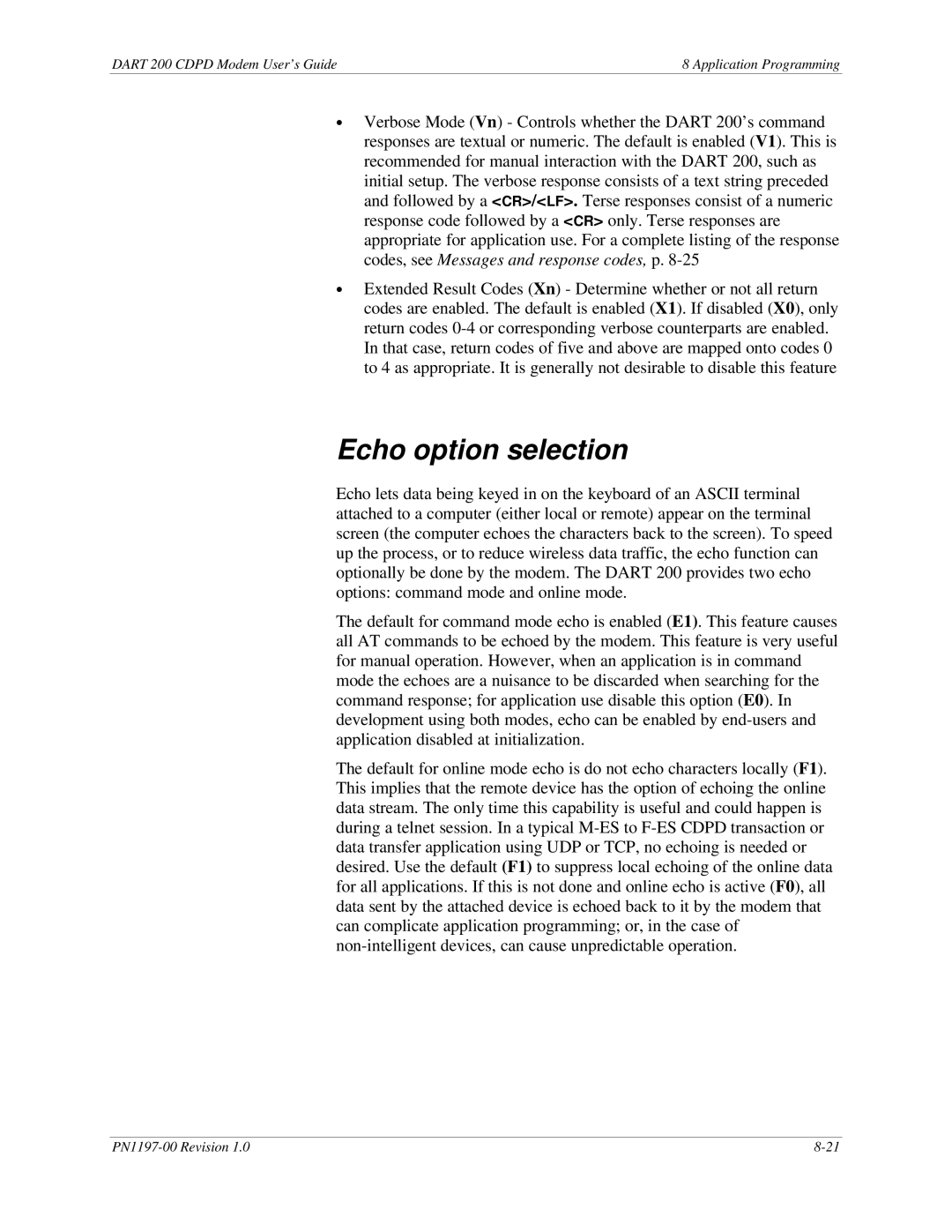DART 200 CDPD Modem User’s Guide | 8 Application Programming |
∙Verbose Mode (Vn) - Controls whether the DART 200’s command responses are textual or numeric. The default is enabled (V1). This is recommended for manual interaction with the DART 200, such as initial setup. The verbose response consists of a text string preceded and followed by a <CR>/<LF>. Terse responses consist of a numeric response code followed by a <CR> only. Terse responses are appropriate for application use. For a complete listing of the response codes, see Messages and response codes, p.
∙Extended Result Codes (Xn) - Determine whether or not all return codes are enabled. The default is enabled (X1). If disabled (X0), only return codes
Echo option selection
Echo lets data being keyed in on the keyboard of an ASCII terminal attached to a computer (either local or remote) appear on the terminal screen (the computer echoes the characters back to the screen). To speed up the process, or to reduce wireless data traffic, the echo function can optionally be done by the modem. The DART 200 provides two echo options: command mode and online mode.
The default for command mode echo is enabled (E1). This feature causes all AT commands to be echoed by the modem. This feature is very useful for manual operation. However, when an application is in command mode the echoes are a nuisance to be discarded when searching for the command response; for application use disable this option (E0). In development using both modes, echo can be enabled by
The default for online mode echo is do not echo characters locally (F1). This implies that the remote device has the option of echoing the online data stream. The only time this capability is useful and could happen is during a telnet session. In a typical
|
